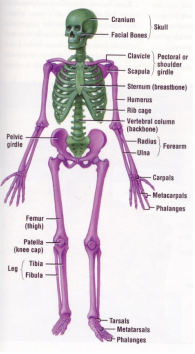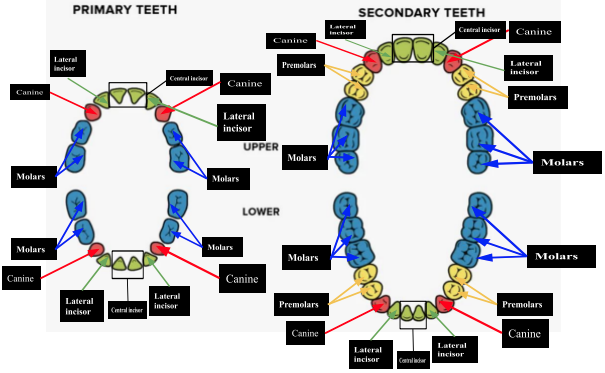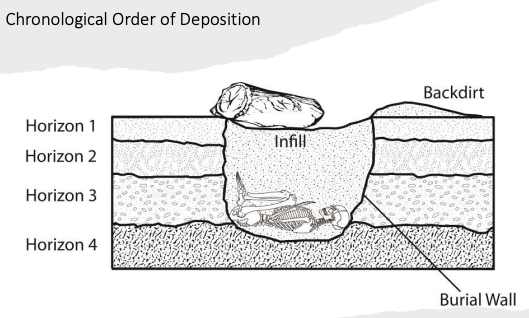ANTH 365: Exam 1 - Review (Bones, Bodies, and Trauma in Forensic Studies)
1/146
There's no tags or description
Looks like no tags are added yet.
Name | Mastery | Learn | Test | Matching | Spaced |
|---|
No study sessions yet.
147 Terms
What are the five subfields of anthropology?
Cultural anthropology, Linguistic anthropology, archaeology, biological anthropology, and forensic anthropology (applied anthropology)
Cultural anthropology
Also known as sociocultural or social anthropology is the study of human cultural variation, including aspects of social organization, subsistence practices, economics, politics, conflict, technology, and religion, among others
Linguistic anthropology
Study of human communication, including differences across time and space, and how language systems affect human culture and behavior
Archaeology
Study of past human cultures through the materials left behind. Material culture can include artifacts (tools), ecofacts (skeletal remains, food refuse), and features (remains of buildings and other structures). Archaeologists often use cultural and evolutionary theories to test hypotheses against the archaeological record
Biological anthropology
Also known as physical anthropology is the study of the evolution and diversity of primates, especially the human lineage. This is accomplished through the study of comparative anatomy, and the study of human and nonhuman primate variation (morphology and genetics) and behavior. Many biological anthropologists focus specifically on skeletal biology, or the study of the anatomy and biology of the skeleton (which includes the bones and teeth).
Forensic anthropology
The application of anthropological method and theory to matters of legal concerns, particularly those that relate to the recovery and analysis of the skeleton
What are the roles of forensic anthropologists?
Specialists in human osteology, consultants of soft tissue is absent/advanced decomposition, personal identification, trauma analysis, crime scenes, war zones, historical cases, mass disasters, osteology and archaeology field methods (life history of individuals, identify individuals, how the person(s) died (content))
What careers are available for forensic anthropologists?
Professor, medical examiner, museums, federal labs, national transportation safety board, international non-government organizations (NGOs)
What are the temporal periods of forensic anthropology?
Formative period (pre-1940), Development period (1940s-1970s), Professionalization period (1970s-1990s), and 21st century forensic anthropology era
What is the formative period?
Rise in anatomists, physicians, physical anthropologist consultants, no formal instruction, limited publication, and Thomas Dwight (1834-1911) becomes the “Father of Forensic Anthropology in the U.S.”
What book did Thomas Dwight publish during the formative period?
The Identification of the Human Skeleton: A Medicolegal Study (1878)
What is the development period?
Drew attention from military and medicolegal agencies, and increase in methods based on deceased soldier data
What did Wilton Marion Krogman (1902-1987) publish during the development period?
Guide to the Identification of Human Skeletal Material (1939) and The Human Skeleton in Forensic Medicine (1962)
What is the professionalization period (1970s-1990s)?
Physical Anthropology section established in the American Academy of Forensic Sciences (AAFS) - (1972), and the American Board of Forensic Anthropology (ABFA) - (1977) is also formed
What did T. Dale Stewart publish during the professionalization period?
Essentials of Forensic Anthropology (1979)
What is forensic anthropology like today?
There is an increased interest and an increase in research, publication, training, standardization and professionalization (graduate programs, scientific working group for forensic anthropology, anthropology subcommittee of the organization of scientific area committees, and the forensic anthropology journal is established in 2018
What is the Frye Rule?
Court case in 1923, requires that the content of testimony be generally accepted by relevant scientific community
What are the Daubert Guidelines?
Court case or rather a trilogy from 1993 and earlier where it establishes the following questions: Has technique been scientifically tested? Has technique been subjected to peer review? What are the error rates of the technique? Are there professional standards for the technique? Is the technique generally accepted within relevant scientific community
What evidence do forensic anthropologists use?
Skeletal remains which involves its handling, storage, and tracking. This prevents loss, contamination or damage.
Forensic anthropologists and Standard Operating Procedures (SOPs):
Provides quality assurance systems, accreditation, personal protective equipment (PPE)
How is case documentation explored for forensic anthropologists?
There is a focus on notes, maps, diagrams, images, documentation must be authenticated, verified, and traceable, and images include photos, radiographs, charts/graphs (photos need photo scale and standard views)
Your evidence is only as good as your documentation of it
True
What are the 6 functions of the skeleton?
Protection, support, movement, blood cell protection, mineral storage, endocrine regulation
1st Function: Protection
Protects organs such as the brain, spinal cord, lungs, and heart
2nd Function: Support
Provides a framework to support the body and attachment sites for muscles, tendons, and ligements
3rd Function: Movement
Acts as a system of levers operated by muscles to move the body
4th Function: Blood Cell Production
Bone marrow is the site of blood cell development
5th Function: Mineral storage
Stores fat and minerals such as calcium and iron
6th Function: Endocrine regulation
Bone cells release hormones involved in the regulation of blood sugar and fat deposition
What is hydroxyapatite?
A mineral composed of calcium phosphate that makes up the inorganic component of bone, it gives bone its strength and rigidity
What is collagen?
A large protein molecule that comprises most of bone’s organic content. Basically occurs as long elastic fibers and gives bone its flexibility
What is bone composed of?
Collagen and hydroxyapatite and is organized into units called osteons
What is compact (cortical) bone?
Dense bone found on external surfaces of bones and the walls of the shafts of long bones. Osteons represent the basic structural unit of compact bone and are organized parallel to the long axis of the bone
What is a spongy (trabecular, cancellous) bone?
Spongy, porous bone and is typically found at the ends of long bones as well as in vertebral bodies and flat bones. It is characterized by thin bony spicules called trabeculae. When located in cranial bones, cancellous bone is called diploë.
Bone tissue is arranged into what?
Cortical (compact) and trabecular (spongy) bone
Periosteum
A thing tissue layer lining the exterior surface of bones
Endosteum
A thin tissue layer lining the interior surface of bones
What are the layers that help nourish the bone and are involved in bone repair following trauma?
Periosteum and Endosteum
Diaphysis
The shaft of a long bone; also called the primary ossification center. This is the first center and normally known to begin ossifying before birth
Epiphysis
The end portions of long bones; also called secondary ossification center
What is between the diaphysis and epiphysis?
A cartilaginous layer called the metaphysis or growth plate, which is where bones grow in length
Metaphysis
Growth plate
Osteon (Haversian System)
The basic structural unit of bone; those formed during growth are called primary osteons while those that are formed later during bone remodeling are called secondary osteons. Much of adult bone is organized into Haversian systems or osteons, which allow for the passage of blood, lymph, and nerve fibers
What do osteons reporesent?
The basic structural unit of compact bone
What is the central called in each osteon called?
The Haversian canal, which contains the blood and nerve supply. This central canal is surrounded by concentric rings called lamellae
Osteoblast
Bone-forming cell, which synthesize and deposit bone material. they secrete the osteoid, which will form the bone matrix and begin the mineralization process
Osteoclasts
Bone-reabsorbing cell that remove bone tissue. Typically modeling occurs through the continuous action of osteoblasts and osteoclasts in response to changing stresses as the bone matures
Osteocytes
Mature bone cell, housed by the lacunae which in turn is located as a small cavity within the lamellae. In addition, osteocytes no longer secrete osteoid
Lamellae
Concentric rings of bone around a Haversian canal
What is inside the lamellae?
Small cavities called lacunae
Lacunae
Cavities within lamellae containing osteocytes.
Canaliculi
Small channels connecting osteocytes - nutrition supply communication
What are the two types of development for bone growth?
Endochondral ossification and Intramembranous ossification
Intramembranous ossification
Bones form within mesenchyme (connective tissue membrane) and essentially has no cartilage model. This development also has flat bones of the cranium surrounding the brain, bones of the face, and part of the clavicle.
Intramembranous ossification refers to what?
Bone formation from a connective tissue membrane
Endochondral ossification?
Development of bone through ossification of a cartilage precursor which is characterized by a flexible collagen model, most bones (particularly long bones like the femur for example)
Endochondral ossification refers to what?
Bone formation from a cartilaginous precursor
What is the purpose of bone remodeling?
Is the continual removal and replacement of existing mature bone through discrete, episodic events. Remodeling occurs due to the natural process of cellular death as well as a means to repair normal microdamage to the bone. However, remodeling can also change bone shape to some extent as a result of mechanical forces acting on the bone. Ceullar action in remodeling is tethered, which means that if both cell types are active at the same time on the same bone surface.
Osteons, which were initially formed during growth, are referred to as what?
Primary osteons
Those that are formed during remodeling are referred to as what?
Secondary osteons
During remodeling, osteoblasts and osetoclasts together as a what?
Basic multicellular unit, or BMU. The BMU acts to replace cortical bone with secondary osteons through a six-phase process
What is the six-phase process of the BMU?
Activation, resorption, reversal, formation, mineralization, and quiescence
Bone Remodeling - Activiation
Takes approximately to three days, involves the recruitment of the precursor cells necessary to form the BMU
Bone Remodeling - Resorption
Osteoclasts secrete demineralizing acids and cut a tunnel that is longitudinal to the bone axis, at a rate of approximately 40-50 um per day
Bone Remodeling - Reversal
Transition between osteoclastic cutting and osteoblastic bone formation
Bone Remodeling - Formation
Osteoblasts lay down osteoid for concentric lamellae along the tunnel at a rate of about 1-2 um per day
Bone Remodeling - Mineralization
Involves mineralization of the osteoid
Bone Remodeling - Quiscence
Secondary osteon is considered mature, and the remaining osteoblasts become osteocytes or are removed
What are two responses to stress that bones react to?
Growth (adding new bone) and resoprtion (removing old/damaged bone)
Wolff’s Law
The principle of bone remodeling to fit its biomechanical function; also called the “law of bone transformation”
Forces due to normal routine use determine how bones grow to fit their function, and how they adapt and are remodeled during life in response to biomechanical needs. This principle is often referred to as the what?
“Law of Bone Transformation” or simply “Wolff’s Law”
Standard Anatomical Position
For humans is standing upright, facing with feet pointing forward, the palms of the hands facing forward, and the thumbs pointed laterally. In anatomical position, none of the bones are crossed when the body is viewed from the front
What is the official definition of a standard anatomical position?
The standard reference position, which for humans is standing, facing with the feet pointing forward, and the palms of the hands forward with the thumbs pointed out
Superior (cranial)
Relative position toward the top (toward the head) along the central, longitudinal axis
Inferior (caudal)
Relative position toward the bottom (toward the tail) along the central longitudinal axis
Medial
Closer to the midline
Lateral
Further from the midline
Proximal
Closer to the trunk (top) for extremities
Distal
Further from the trunk (bottom) for extremities
Anterior (ventral)
Toward the front
Posterior (dorsal)
Toward the back
What is an axial skeleton?
Bones of the midline: Skull, mandible, sternum, vertebral column, sacrum, ribcage

What is an appendicular skeleton?
Everything else (bones of the appendages = arms and legs): Clavicle, scapula, humerus, radius, ulna, carpals, metacarpals, hand phalanges, femur, patella, tibia, fibula, tarsals, metatarsals, phalanges, and pelvic girdle

What is the dental formula?
2123 (2 incisors = central incisor and lateral incisor, 1 canine, 2 premolars, and 3 molars)

What is a recovery scene?
Location where human remains are found and possible a crime scene
What are the type of recovery scenes encountered in the forensic archaeology?
Surface vs. subsurface (buried), primary vs. secondary burial, disturbed vs. undisturbed, submerged (aquatic), and fire (mix of surface, subsurface, sometimes submerged, and fragmentation)
What are the common scene types where remains are found by forensic archaeologists?
Surface, burial, submerged, and fire scene
Surface scenes
Occur when remains are deposited on the surface of the ground (are not deliberately buried or submerged). Sometimes the remains will be in a very similar location and position to when they were deposited. More often, however, especially for remains that have decomposed to the point of skeletonization, scavenging by animals and other natural and physical forces (e.g., water, wind, gravity) contribute to the scattering of remains from their initial deposition site. Remains that have been redistributed in this manner are referred to as a surface scatter.
Subsurface probing
The technique of systematically inserting a thin blunt probe into the ground to assess relative soil compaction which can be an indicator of disturbed soil and a possible grave. Also called probing
What are submerged scenes?
Involving remains that are in aquatic environments. These may be large bodies of water such as oceans, lakes, and large rivers, but may also be swamps, small or shallow ponds, or streams. Remains in these cases may be floating on the surface of the water, resting on the substrate at the bottom, or possible suspended in between
What are fire scenes?
Involves thermally-altered remains, which are often intermixed with other burned debris such as building materials or plant debris (trees and leaves). While such remains may be found in buried or submerged scenes, they are most commonly surface scenes. Fire scenes are often very complex, requiring different methods of documentation and collection because they are often associated with a high degree of fragmentation as well as other scene considerations such as access and safety hazards
What are Steno’s laws?
Law of superposition, law of original horizontality, law of crosscutting, and law of lateral continuity
What is the law of superposition? (important for exam)
Younger layer sit on top of older layers and can be viewed as lower strata must have formed before upper strate

What is the law of original horizontality?
Layer of sedimentary rock and originally deposited flat
What is the law of cross-cutting relationships?
Rock layer A and B must be older than the intrusion C
Law of lateral continuity?
Layers are continuous until encounter solid bodies that block their deposition
What is a horizon?
Soil layer
What is the chronological order of depoisition
Horizon 1, Horizon 2, Horizon 3, Horizon 4, Burial Wall surrounding the infill that has the skeleton and then backdirt

What are the 4 phases of archaeological investigation?
Systematic search, Evaluate area of interest, recovery, interpretation and reporting
Phase 1: Systematic search
Surface survey, remote sensing